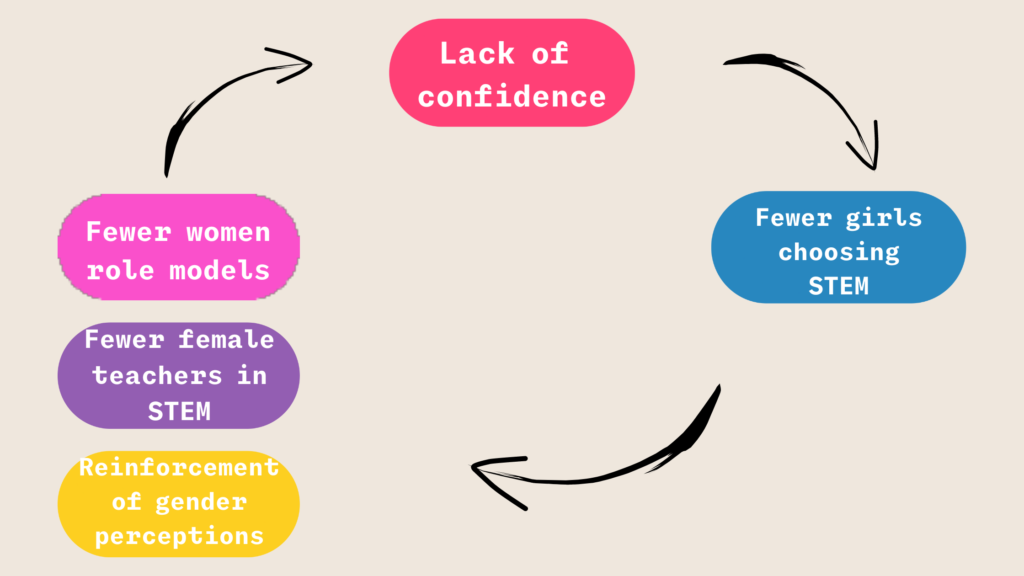Almost 300 years after the first female scientist, Laura Bassi struggled relentlessly to just be recognised as one, it is imperative to consider where we currently stand on the issue of women’s representation in STEM fields. As the world celebrated International Day of Women and Girls in Science last Saturday, we finally decided to take a look at the nature of gender gap in STEM, where it stems from and how we can attempt to bridge that gap. So over the next few weeks, I’ll be slowly unwrapping the nuances of the topic to paint a clear picture.
It has been nearly 60 years since the Draw-A-Scientist experiment conducted by the social scientist, David Chambers on a cohort of elementary school children. That experiment has been replicated multiple times over the years. While it’s very encouraging to see that the percentage of students who drew female scientists has significantly increased (from 1% female students in 1977 to 58% in 2016), an un-encouraging gap is still gnawing at the perspective bias that stems from the idea of a woman taking leaps in science. Unsurprisingly, that bias increases with age, as people become more resonant with the society around them.
Gender Gap in STEM Education
Let’s start by looking at the situation of STEM education for young girls. According to a report by UNICEF, only 45% of girls transition to the upper secondary level, a stage where STEM skills are further cemented and only 35% go for higher education in STEM. In India, while 43% of total STEM graduates are women, less than 20% go for a career in the field. Now, let’s unwrap the possible causes behind such statistics, even as we ride through an era of ripple-generating revolutions.
- Gender stereotypes: 70% of individuals in 34 countries associated science with males more than females. As disturbing as it sounds, there’s also variation in masculinity indices between different subjects with Maths being rated as the most masculine. This projection of STEM as predominantly masculine discourages girls from giving it a good shot, even if studies have shown that girls are as likely as boys to achieve minimum proficiency level during secondary education.
- Lack of confidence: However, in developing nations with relatively less awareness, fewer girls are able to achieve that minimum proficiency level. This could potentially stem from the lack of role models, or something as simple as a lack of parental expectations. While drilling into the psychology of low confidence will require us to peel layers of generational biases, we could at least pay heed to the feedback loop it generates.
- Lack of a motivated peer group: Because of a multitude of factors ranging from socioeconomic to gender stereotypes, girls usually engage in a lesser number of intellectual discussions and ask fewer questions. This not only discourages the ones who are actually interested in having such conversations but also reinforces the cycle of biased perception that male peers are more knowledgeable in STEM subjects.
Some other important reasons include: socioeconomic factors, lack of female teachers in higher education, lack of resources and career guidance, etc.

Even if some women manage to evade the societal fabric of biases, there lies a gender divide within the STEM fields too where the probability of pursuing natural sciences (perceived as feminine is equivalent across both genders while that of subjects like engineering, manufacturing and construction (perceived as masculine) saw more male representation. This comes as no surprise in a country where males are presumed to pursue engineering while females are presumed to become a doctor (remember the movie, 3 idiots?).
Women in STEM Workforce
Bringing into focus a previously stated factoid: of the 43% female STEM graduates, only 14% choose to further their career in STEM. While representation in the healthcare workforce is not that bleak, women are very under-represented in the rest of the workforce. Gender discrimination and bias in the workplace could be the major catalyst behind this aversion towards STEM careers. As aptly represented in the documentary, Picture a Scientist, sexual harassment is just the tip of the iceberg when it comes to discrimination. What’s not paid much attention are the subtle ‘seemingly unimportant’ issues like being ignored during meetings, being passed over as a collaborator, opinions being considered less logical, etc.

A recently conducted study showed that women publish less academic literature and even fewer are present as first or independent authors. One of the reasons behind this is the high dropout rate of women as they advance in their careers in academia. A second and interesting reason the study stated revolves around the absence of women in collaboration networks that birth more ideas and discoveries. It could again be because of a lack of confidence, absence of encouragement, peer perception that women have less logical thought to contribute, etc. Another major issue that is often side-lined is the lack of credit. Even if multiple women manage to push through the viscous unforgiving tunnel of gender discrimination to come up with valuable discoveries, most of them are never given their due credit. Credit is either stolen or only given partially as if their research work is not their own. Other obvious but gruesome reasons include the pay gap, skewed pressure of family responsibilities, hiring discrimination, etc.
Now, what do we do?
Even if, over the years, the pay gap has reduced, more women are getting their due credit, and perceptions are shifting, the data clearly shows that while the gender gap might have reduced, it is nowhere close to getting eliminated. While it’s a good thing to hold on to the hope that situations are getting moulded for the better, it shouldn’t be a decelerator on our way to bias elimination. Apart from the much-needed strides in improving the accessibility of resources and opportunities, the first step would be to give existing females in STEM much-deserved recognition, starting from a primary level student to a senior researcher. Building awareness regarding a career in STEM and providing extra support in career guidance is also imperative to break the inherent lack of motivation in women. There are also many fundamental level changes in societal perceptions that need to be cultivated.
We will talk about more such potential bridges that can be built to close the gap in the coming few weeks in the blog. Meanwhile, let’s ponder and work on the micro actions we can take in our immediate surroundings to pull the threads a little tighter: be it hyping up a little girl on her way to school or something as simple as ‘listening’ to a woman.

